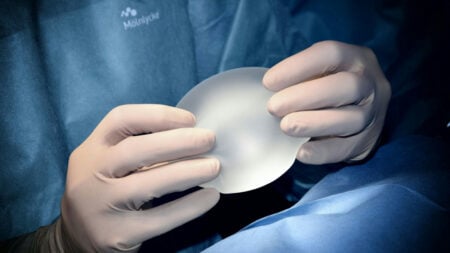A Catholic church in Indiana got excited over what they presumed to be a miracle after several red spots appeared on a communion wafer. Needless to say, the church even deemed it an unusual phenomenon– at least miraculous enough for the Archdiocese of Indianapolis and laboratories to inspect. Sadly, the said church will have to look for other miracles since the lab tests have confirmed that the red spots on the communion wafer were just mold or fungus and a bit of bacteria.
The discovery took place in St. Anthony of Padua Catholic Church in Morris, Indianapolis. Some of the clergymen apparently found interesting red marks on their communion wafers, which had fallen out of a Mass kit, and became excited at the prospect of a miracle happening at their small-town church. As was customary for Catholic churches claiming miracles, the phenomenon had to be tested.
Around a month later, the biochemical analysis came up with only this analysis:
“Following policy established by the Holy See, the host was submitted for professional, biochemical analysis at a local laboratory. The results indicate the presence of fungus and three different species of bacteria, all of which are commonly found on human hands,” as the composition of the red marks on the communion wafer, courtesy of Audacy’s transcripts.
Someone might have simply forgotten to wash their hands while preparing the Mass kit. Simply put, no presence of human blood was discovered on the communion wafer.
Many of St. Anthony church members likely assumed that the red marks could’ve been blood, which could’ve been a poetic miracle since the communion wafers are typically paired with wine, supposedly to be the blood of Jesus Christ. The wafers are supposedly the body of Christ, and a priest would then consecrate the two at a Mass, sometimes to be fed to churchgoers.
It appears the St. Anthony church was really hoping for a Eucharistic miracle, especially since their town is small and could use more divine intervention.
“We have such a little town. You can drive through and blink, and you’re through it. It means the world, it does, and I think there is something special about our church up here,” claims Shari Strassel of St. Anthony church.
Online Catholics Chimed in
The occurrence of the red marks on the communion wafers was quite a big deal in the Catholic community last month and even blew up on X/Twitter. However, the recent lab results have dispelled the miracle and have left some Catholics nodding in clarity as to why the communion wafers turned moldy.
Others explained the Catholic Church’s process of examining miracles, and that this was a common protocol. It’s just that the small-town Indiana church members might have gotten a little too excited with their proclamations.
“I can tell you from the churches i grew up in. They are filthy places,” claims Redditor the_simurgh
“This is just business as normal for the Catholic Church. They had a reported miracle, they tested it, they concluded it wasn’t, that’s just something they do,” explains Redditor My_useless_alt
“Bacteria mimicking what humans conceive as a miracle on something to be consumed in order for bacteria to achieve further growth in a host is truly hilarious as bacteria actually being the higher power that drives us all,” says Redditor averytolar
“Reminds me of the study finding 86% of holy water contains fecal matter. I believe specific to the US,” reminds Redditor Larkfor








